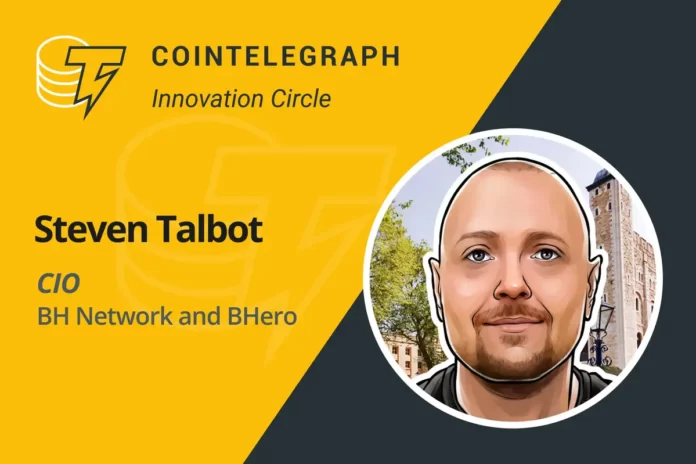Over a decade ago, the cofounders of TopIQs were freelance internet marketers dealing with many of the frustrations that still irk freelancers today. They invested significant time pitching, landing and completing projects for clients on freelance marketplaces. When it was time to get paid, they spent weeks or months chasing payments or resolving account issues and fraudulent chargebacks—only to owe a high percentage of marketplace and financial service fees in the end.
“Traditional freelance marketplaces take up to 20% of fees for any job,” said Steve Talbot, one of the chief information officers at BH Network, the creator of TopIQs, a blockchain-based freelance marketplace. “This is very challenging, especially when you’re just starting out. Say you make $500 from a few small projects; the marketplace takes $100, the bank or financial app takes another $15 and so on. Pretty soon that $500 is a much smaller amount.”
Join the community where you can transform the future. Cointelegraph Innovation Circle brings blockchain technology leaders together to connect, collaborate and publish. Apply today
Talbot and his partners, Eddie Munteanu, Marius Grigoras, and Petrica Butusina imagined a better way for freelancers to find work from trusted businesses and get paid quickly without the usual headaches. Their vision became TopIQs, a decentralized freelancing marketplace built on the MultiversX blockchain.
“TopIQs is a DeFi marketplace designed for global Web3 buyers and sellers,” said Munteanu. “We take a maximum 5% fee on crypto payments, and a transparent permanent history on the blockchain protects both buyers and sellers. Businesses know they will get work they are satisfied with, and freelancers know they will get paid promptly. Both parties own the smart contracts they develop. Payment is held in escrow for the duration of the project, then released to the freelancer once it is complete.”
The beta version of TopIQs launched in December 2022, and the full product is scheduled for release in spring 2023. Here are three key lessons that the TopIQs team has identified about a successful Web3 product launch:
1. Prioritize educating your users.
Blockchain and crypto platforms are still new to many people. If your product is targeting Web2 users, you need to offer an educational component, teaching people the basics and benefits of Web3. What are your customers’ pain points, and how does your product address them? What essential information do they need about the blockchain or crypto? What will they gain from adopting this new technology? Provide video tutorials, Q&A sessions and other searchable resources.
2. Test relentlessly during your beta launch.
Before you do a full launch, budget enough time for a thorough beta testing period. During this soft launch, invite users to use your product for free, and gather as much community feedback as possible. Which elements are popular and easy to use? Which features generate the most questions or bugs? Keep testing and iterating until you are confident about a full product launch.
3. Provide exceptional customer support.
Nurture your user community by offering responsive, multifaceted customer support. Sometimes users prefer to watch video tutorials or read online resources to answer their questions. Other times, they want to speak directly with a team member who can help them. Strive to offer a variety of support options, including videos, articles, knowledgebases and chat apps.
“We want to help more people get into freelancing, and we understand the barriers on a personal level because we’ve been there ourselves,” said Talbot. “TopIQs aims to educate people about how to get into freelancing and how to get into cryptocurrency. It puts the control back in the hands of users to create a more secure and connected way to work.”
This article was published through Cointelegraph Innovation Circle, a vetted organization of senior executives and experts in the blockchain technology industry who are building the future through the power of connections, collaboration and thought leadership. Opinions expressed do not necessarily reflect those of Cointelegraph.
Learn more about Cointelegraph Innovation Circle and see if you qualify to join
Visits: 0









